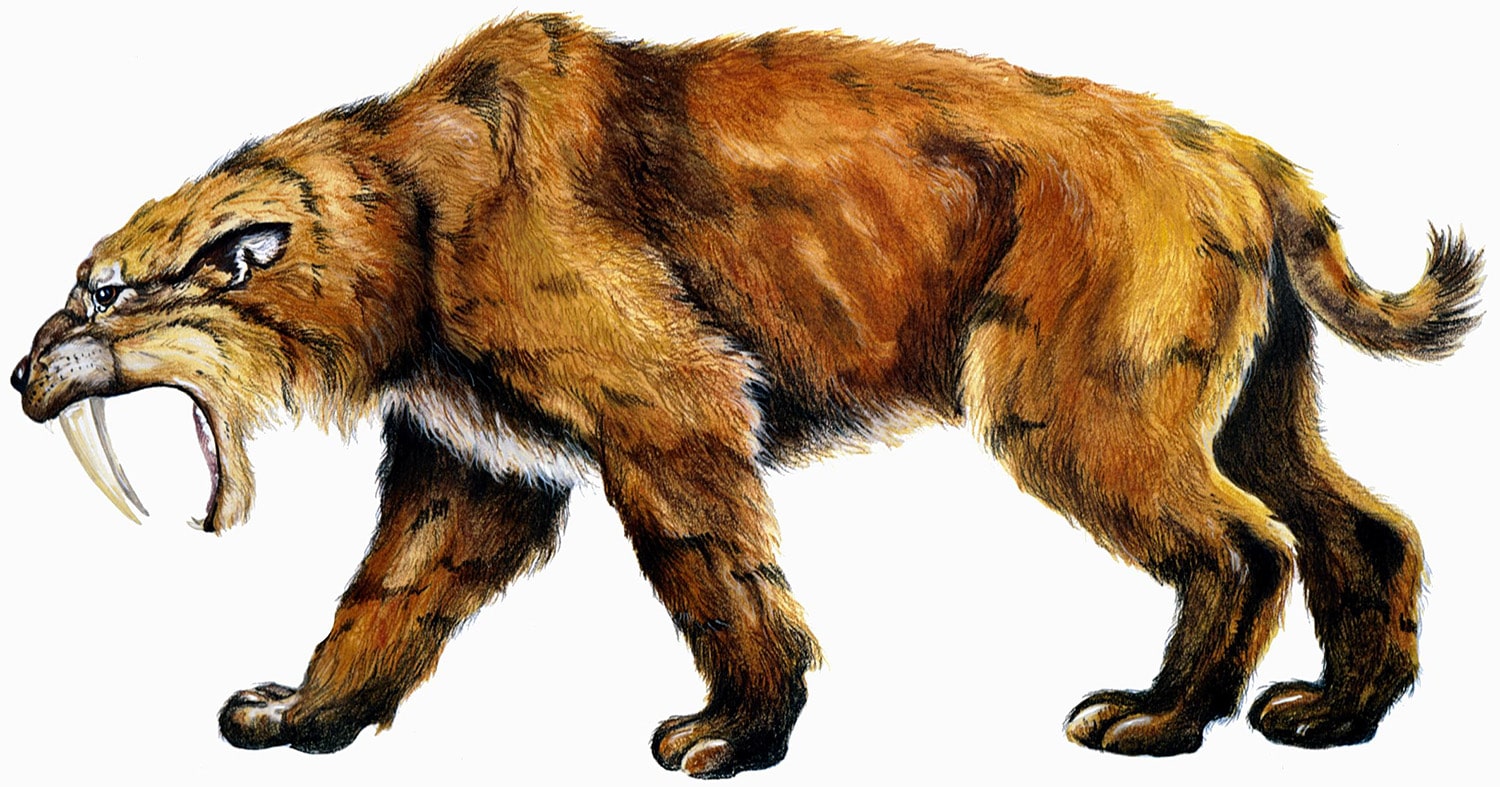
18 interesting facts about Saber-toothed Cats
- 👁️ 323
Saber-toothed cats, often symbolized as fearsome predators of the prehistoric world, have fascinated scientists and the public alike for centuries. These remarkable creatures roamed the Earth millions of years ago, leaving behind a legacy encapsulated in fossil records that allow us to piece together their existence and behaviors. Despite their common name, saber-toothed cats were not directly related to modern-day felines but shared common predatory traits. Their most distinguishing feature, the long, saber-shaped canine teeth, has become an iconic symbol of prehistoric mammalian carnivores. Here are 18 interesting and informative facts about saber-toothed cats that delve into their lives, characteristics, and the mystery that surrounds these magnificent beasts.
- Saber-toothed cats belonged to a group of predatory mammals known as machairodonts, within the subfamily Machairodontinae.
- The most well-known species, Smilodon fatalis, roamed North and South America about 1.6 million to 10,000 years ago.
- Their elongated canine teeth could grow up to 7 inches (18 cm) long.
- Despite their formidable teeth, saber-toothed cats had relatively weak bite forces compared to modern big cats.
- These predators likely used their powerful forelimbs to subdue prey before delivering a fatal bite.
- Saber-toothed cats were not exclusive to one habitat and adapted to environments ranging from dense forests to open plains.
- They primarily hunted large herbivores such as mammoths, mastodons, and bison.
- Fossil evidence suggests saber-toothed cats lived in packs or family groups.
- The largest species, Smilodon populator, could weigh over 880 pounds (400 kg) and stood about 4 feet (1.2 meters) tall at the shoulder.
- Unlike modern cats, saber-toothed cats could not fully retract their massive canines.
- Their extinction around 10,000 years ago coincides with the disappearance of many large herbivore species, indicating a possible link to changes in prey availability.
- Saber-toothed cats had robust skeletons, with particularly well-developed forelimb bones.
- Analysis of fossilized teeth suggests that, like modern predators, they fed on a variety of prey, indicating flexible hunting strategies.
- The name “saber-toothed” comes from the resemblance of their canine teeth to a saber, a type of curved sword.
- There were several different species of saber-toothed cats, each varying in size and geographic distribution.
- Some species of saber-toothed cats had the ability to open their jaws up to 120 degrees, significantly wider than modern cats.
- Saber-toothed cat fossils have been found on every continent except Australia and Antarctica.
- The La Brea Tar Pits in Los Angeles, California, are one of the richest sources of Smilodon fossils, providing extensive insights into their existence.
Saber-toothed cats represent a fascinating chapter in the Earth’s history, showcasing the diversity and adaptability of prehistoric life. Their impressive canines and physical prowess made them one of the apex predators of their time, dominating the food chain until their mysterious extinction. Today, the study of their fossils continues to unveil the secrets of their biology, behavior, and interactions with the environment. Understanding these magnificent creatures gives us a window into a world long gone and reminds us of the ever-changing nature of life on our planet.
Saber-toothed cats, often symbolized as fearsome predators of the prehistoric world, have fascinated scientists and the public alike for centuries. These remarkable creatures roamed the Earth millions of years ago, leaving behind a legacy encapsulated in fossil records that allow us to piece together their existence and behaviors. Despite their…